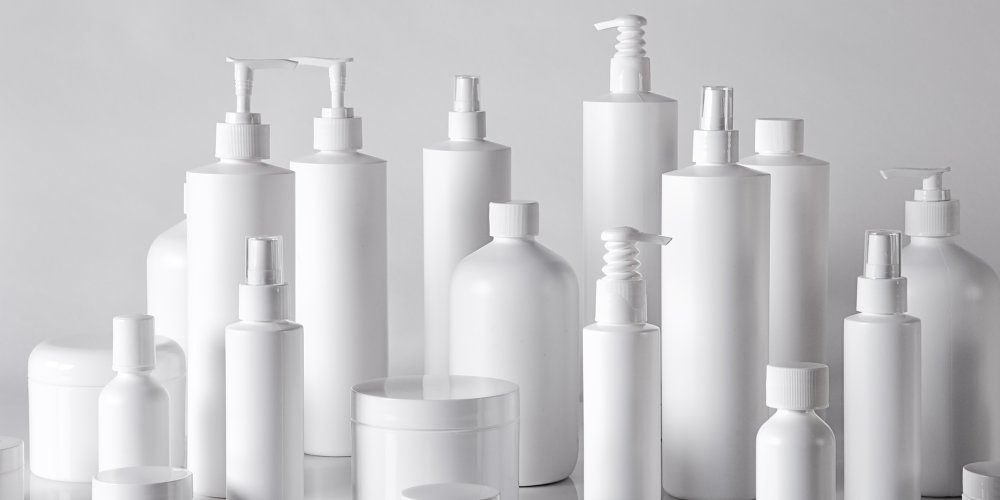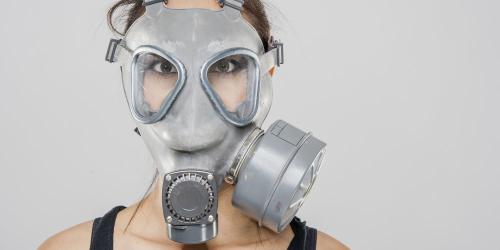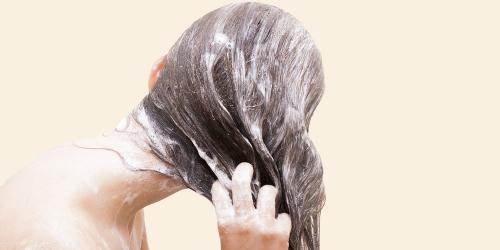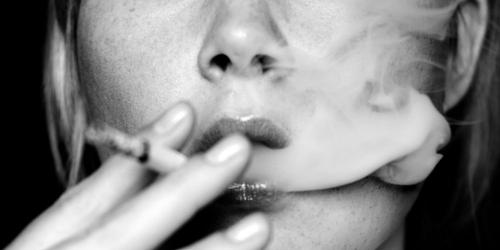Taking the plunge in the magazine 60 million consumers, regularly in the spotlight for its conso alerts, the association UFC-Que Choisir published on February 21 the list of 11 substances "harmful" still (and always) contained in our cosmetics .
On the menu, molecules with extended names such as Methylisothiazolinone, Cyclopentasiloxane, Phenylenediamine but also other, better known, such as Butylparaben and Propylparaben, Sodium Lauryl Sulfate or Triclosan.
Products accused of toxicity that the cosmetologist and biologist * Sophie Strobel agreed to decrypt with us. To do this, the latter has ordered them by family: preservatives, chemical filters and silicones.
Parabens and other preservatives
"As their name suggests, these are substances used by the cosmetics industry to ensure optimal preservation of products placed on the market," says Sophie Strobel. "It is difficult to do without it, especially for formulations that contain water -majorities in cosmetics- and that are in fact conducive to the development of bacteria. "
Among them, we find:
- Phenoxyethanol
Reproaches: it can "cause severe to moderate eye irritation " according to a report by the ANSM dated 2012. "It is a safe conservative, rather recommended in the industry," stresses Sophie Strobel. Moreover, the European Scientific Committee for Consumer Safety (CSSC) considered in its final opinion of October 6, 2016, that used at 1% in cosmetics, it is safe for health, regardless of the group age.
Where is it found? In creams, lotions, gels, shampoos, toothpastes, make-up removers, wipes ...
- Methylisothiazolinone, Methylchloroisothiazolinon
Reproaches: allergenic substance , especially in children in whom it can cause major eczema attacks. "This is an old conservative abandoned several years ago for the benefit of parabens, precisely because it was known to be allergenic," says the biologist. "After the controversy related to parabens, the industry came back before changing its mind. The substance has just been banned in all products not rinsed by the CSSC.
Where are they found? Since February 2017, only in cosmetics that can be rinsed. They are also used in cleaning products for which the restrictions are not the same.
- Parabens (Butylparaben, Propylparaben or Sodium Butylparaben, Potassium Butylparaben, Sodium Propylparaben, Potassium Propylparaben)
Reproaches: suspected of being carcinogenic . "They are reliable preservatives that have long been used without disappointment in cosmetics. We find some in nature, in honey for example! "Says Sophie Strobel. In 2004, the British researcher Philippa Darbre highlights their presence in biopsies of breast tumors. Problem, according to our cosmetologist: "The study is flawed in its methodology. Its author has even recognized since but the damage is done: consumers do not want more! "
Where are they found? Although they have almost disappeared from most cosmetics, they are present in various agri-food products (E 214, E 215, E218 and E219) and drugs such as certain vaccines, in different dosages.
- Triclosan
Reproaches: accused of being an endocrine disruptor , "it is especially a powerful bactericide that is reputed to induce resistance to antibiotics," Sophie Strobel analysis warns: "avoid it as much as possible, this is one of substances that poses the most question now. "
Where is it found? Well known in the cosmetics industry that uses it "in the end, little on the scale of its production", it is mainly found in hygiene products "on horseback with the health sector, such as toothpastes, products anti-acne or deodorants, "says the cosmetologist.
- BHA and BHT
Reproaches: suspected to be endocrine disruptors, "without official confirmation," says Sophie Strobel. "These are antioxidant molecules designed to protect formulas by limiting the rancidity of fatty substances. They are not used much today, they are often replaced by vitamin E (tocopherol or tocopheryl acetate), "says the biologist.
Where are they found? In small quantities in lip balms lipsticks, creams of care, foundations but also and especially in the food (margarines, soups and dehydrated food -E320 and E321) where still in the painting.
Silicones in our creams and shampoos
"In cosmetics, silicones are generally used for their texture effects on the skin and hair - velvety feeling, air effect, etc. "Recalls the cosmetologist.
- Cyclomethicone
Reproaches: "I think that there is a confusion on this substance", announces Sophie Strobel. "It is a volatile silicone that is perfectly inert on skin and hair. Its only downside is environmental since it is hardly biodegradable. In this regard, the CSSC proposed to re-examine its regulations for 2018.
Where is it found? In many hair products, face creams, makeup bases, foundations, etc.
- Cyclotetrasiloxane and Cyclopentasiloxane
Reproaches: carcinogenic substances. "A proven fact for the first who is banned in cosmetics. For the second, the Cyclopentasiloxane is more complicated, "concedes the expert. Indeed, the latter is closely monitored because it contains "traces of Cyclotetrasiloxane". As a precaution, this molecule is therefore prohibited in sprays and aerosols for inhalation issues.
Where are they found? In hair products mainly. The alternative? Choose shampoos and styling products stamped "without silicones".
UV chemical filters
"They are used to limit the degradation of formulas under the effect of UV or to protect the skin from the well-known effects of the sun," explains Sophie Strobel.
- Benzophenones
Reproaches: endocrine disruptors whose traces have been found on aquatic fauna . "Today it's a sunscreen rather used at a very low dose to protect UV-sensitive formulations, less to protect the skin," she notes.
Where is it found? Quite seldom used in cosmetics and in weak dosages, it is generally included on the cosmetics label in the transparent bottle / tube.
- Ethylhexyl Methoxycinnamate
Reproaches: same as for Benzophenones "although it is not challenged by the CSSC at European level" indicates the biologist. It is a sunscreen designed to protect the skin.
Where is it found? It is widely used in sunscreen cosmetics but also in skin care associated with an SPF (day creams, foundations, etc.). It is appreciated for its lightness "and its transparency", unlike mineral filters, thicker. The alternative? Choose daily care without a protective filter to limit contact, except during solar exposure, of course!
Coloring and foaming agents: what is the problem?
- Phenylenediamine
Reproaches: hyper allergic substance. "It's a staple of hair coloring for which there is no alternative yet," says Sophie Strobel. "It is because of her that all the hair colorings sold on the market contain the famous warning urging to carry out an allergy test. It is clearly harmful to people who are allergic to it, but not to others. "
Where is it found? In all "standard" hair coloring products. The alternative? The vegetable colorations.
- Sodium Lauryl Sulfate, Ammonium Lauryl Sulfate
Reproaches: irritating substances. "Yes, but only if these surfactants are used in high doses, or poorly formulated. Today the laboratories are able to reduce their effect "stripper" by associating them with softer substances: it is all the art of the cosmetic formulation! "Argues the cosmetologist. Cheap, it provides a foaming power unparalleled products and long enjoyed consumers "who thought, wrongly, the more foam, the more it cleans. "
Where are they found? Mostly in cleaning products like shower gels, shampoos ... The alternative? Products with mild surfactants - which foam very little - plebiscite by the followers of the low poo for example!
* Thanks to Sophie Strobel, cosmetologist biologist author of the blog (Dé) makeup, beauty decrypted




